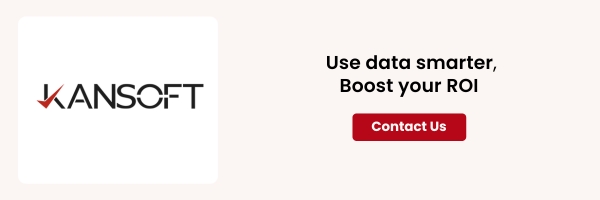In today’s fast-paced business landscape, companies face increasing pressure to optimize operations, enhance decision-making, and ultimately maximize their Return on Investment (ROI). To achieve this, businesses must leverage the power of data. With the vast amounts of information available, organizations can make data-driven decisions that drive efficiency, growth, and profitability. One of the most effective ways to harness this power is by adopting data analytics and business intelligence (BI) tools. In this blog, we’ll explore how these tools can help maximize ROI and provide actionable insights for organizations across various industries.
Understanding Data Analytics and Business Intelligence

Before diving into the specifics of how data analytics and BI tools maximize ROI, it’s essential to understand the difference between the two concepts:
- Data Analytics: This refers to the process of examining raw data with the purpose of drawing conclusions about that information. Data analytics involves statistical analysis, predictive modeling, and data mining to uncover trends, patterns, and correlations within large datasets.
- Business Intelligence (BI): BI refers to the tools, technologies, and practices that help organizations collect, analyze, and present business data. BI focuses on transforming raw data into actionable insights that support business decisions. BI tools often include dashboards, reporting systems, and visualizations that allow decision-makers to track performance and make informed choices.
Together, data analytics and BI tools form a powerful combination that empowers businesses to gain insights, improve processes, and drive growth.
Key Benefits of Using Data Analytics and BI Tools
1. Informed Decision-Making
One of the most significant advantages of using data analytics and BI tools is the ability to make informed decisions. Gone are the days of relying on gut feelings or intuition to drive business strategies. With these tools, decision-makers have access to accurate, real-time data that helps them make evidence-based choices. By analyzing historical data and current trends, businesses can predict future outcomes and make proactive decisions, rather than reacting to unforeseen challenges.
2. Improved Operational Efficiency
Data analytics and BI tools allow companies to streamline operations and identify areas for improvement. By analyzing operational data, organizations can pinpoint inefficiencies, reduce waste, and optimize resource allocation. For example, manufacturing companies can track production line performance, identify bottlenecks, and make data-driven adjustments to improve output. In retail, businesses can analyze customer purchasing behavior to better manage inventory levels and reduce overstocking or stockouts.
3. Customer Insights and Personalization
Customer-centric businesses can greatly benefit from data analytics and BI tools by gaining a deeper understanding of their customers. With these tools, organizations can track customer behavior, preferences, and interactions to create personalized experiences. For example, e-commerce platforms can use data analytics to recommend products based on past purchases, improving conversion rates and customer satisfaction. By leveraging customer insights, businesses can tailor marketing efforts, product offerings, and services to meet customer needs, resulting in higher customer loyalty and retention.
4. Predictive Analytics for Future Growth
Predictive analytics, a subset of data analytics, enables businesses to forecast future trends and make proactive decisions based on data-driven predictions. By analyzing historical data, predictive models can identify patterns that help businesses anticipate market shifts, customer behavior, and industry changes. For instance, a retail business could use predictive analytics to forecast demand for certain products, ensuring they have adequate stock to meet customer needs without over-ordering.
5. Enhanced Financial Management
Effective financial management is crucial to maximizing ROI, and data analytics and BI tools can play a significant role in this area. By analyzing financial data, businesses can gain a clear picture of their financial health and performance. BI tools can provide detailed financial reports, track key performance indicators (KPIs), and help businesses identify trends in revenue, expenses, and profitability. By using this data, organizations can make strategic decisions to reduce costs, improve cash flow, and increase profitability.
6. Real-Time Reporting and Dashboards
One of the key features of BI tools is the ability to provide real-time reporting and interactive dashboards. These tools allow decision-makers to access up-to-date data and track performance metrics in real time. Dashboards provide visual representations of data, making it easier for executives and managers to understand key trends and make timely decisions. For example, sales teams can use real-time dashboards to track sales performance, monitor progress against targets, and identify areas that need attention.
7. Competitive Advantage
In today’s competitive marketplace, gaining a competitive edge is essential for long-term success. Data analytics and BI tools provide businesses with insights that allow them to stay ahead of the competition. By analyzing market trends, customer behavior, and competitor performance, companies can identify emerging opportunities and potential threats. With the right data, organizations can pivot their strategies and make adjustments before their competitors do, positioning themselves as leaders in their respective industries.
With the integration of AI and machine learning, businesses can take predictive analytics to the next level—automating data interpretation, uncovering deeper patterns, and enabling smarter, faster decisions that directly impact ROI.
Follow us on LinkedIn to stay updated with the latest insights, case studies, and innovations in business intelligence and data analytics.
Key BI Tools to Maximize ROI
Now that we’ve explored the benefits of data analytics and BI tools, let’s take a look at some of the most popular and effective tools that can help businesses maximize ROI:
-
- Tableau: Tableau is one of the most widely used BI tools, known for its ease of use and powerful data visualization capabilities. It helps businesses analyze complex data and generate insights that inform decision-making.
- Google Analytics: For businesses with a strong online presence, Google Analytics is an invaluable tool. It provides in-depth insights into website traffic, user behavior, and conversion rates, helping businesses optimize their digital marketing strategies.
- QlikView: QlikView is a comprehensive BI platform that offers data visualization, reporting, and analytics capabilities. It allows businesses to analyze data from multiple sources and make data-driven decisions quickly.
- SAS Business Intelligence: SAS provides a wide range of analytics tools that can be used for data visualization, predictive analytics, and reporting. It is often used by organizations looking to implement Advanced Analytics for more complex decision-making.
Conclusion
Data analytics and business intelligence tools are essential for organizations looking to maximize ROI in today’s data-driven world. By providing actionable insights, improving operational efficiency, and enhancing decision-making, these tools help businesses stay competitive and achieve sustainable growth. Whether you’re looking to improve customer satisfaction, streamline operations, or forecast future trends, adopting the right BI tools can unlock significant value for your organization.



